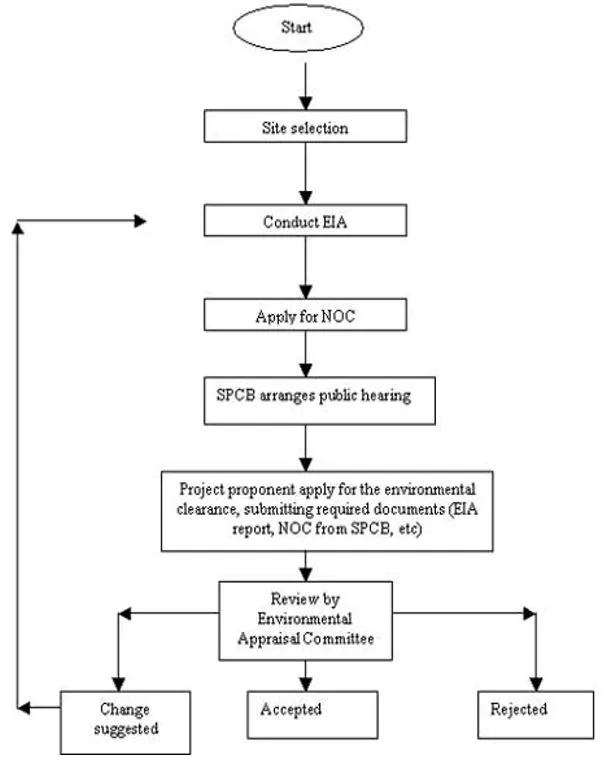

22nd May 2024 (12 Topics)
Context
The Supreme Court has temporarily halted the construction of a 90-acre hotel and township project in the Kumaon hills of Uttarakhand, challenging the "single window" clearance system intended to expedite infrastructural development in ecologically sensitive and seismic-prone lower Himalayan regions.
Key-highlights
- SC issued the stay order amidst Uttarakhand's ongoing struggle with forest fires and loss of green cover.
- Petitioner's Argument: The petition questioned the replacement of mandatory environmental clearances with "single window" clearances for large construction projects in fragile ecosystems.
- This case highlights the tension between rapid infrastructural development and the need to protect ecologically sensitive areas, emphasizing the importance of rigorous environmental assessments and legal scrutiny before proceeding with large-scale construction projects in fragile environments.
What is the process of Environmental Clearance in India?
- EC is a mandatory process for projects beyond a certain size, involving an Environmental Impact Assessment (EIA) and sometimes public hearings with local communities.
- Why is EC Needed? Large-scale construction projects (housing, infrastructure, commercial) significantly impact the environment through increased water usage, wastewater generation, traffic, and solid waste production.
Governing Law and Amendments
- Environmental Impact Notification, 2006: Issued under the Environment (Protection) Act, 1986, it governs the EC process.
- Amendments in 2018: Expanded the range of projects requiring EC to cover more projects with significant environmental impacts.
- Draft EIA Notification, 2020: Proposed changes include reduced time for public hearings, exemptions for certain projects, and provisions for reporting non-compliance and penalties.
- Single-Window Clearance: Discussed since 2018, the goal is to expedite infrastructure development perceived to be hindered by bureaucratic processes.
- PARIVESH Portal: A web-based application for online submission and monitoring of proposals for Environmental (EC), Forest (FC), Wildlife (WL), and Coastal Regulation Zone (CRZ) clearances.
- Objective: To provide a “single window” solution for these clearances through process automation, data synchronization, and leveraging technologies like GIS and advanced data analytics for efficient, transparent decision-making without compromising environmental safeguards.
Disadvantages of the Single-Window Clearance System for Environmental Approvals
- While suitable for customs and taxation, applying this system to environmental clearance is problematic.
- Importance of rigorous environmental assessment
- Seasonal Variations: A thorough Environmental Impact Assessment (EIA) should account for seasonal changes over a year.
- Cumulative Impacts: Projects in polluted areas require studies on cumulative impacts, adding to the time needed.
- Stakeholder Involvement: Sustainable development principles necessitate involving all stakeholders, particularly affected communities, which is a lengthy process.
- Complexity of the Single-Window Clearance System:
- Political Reform: Implementing single-window clearance involves significant political and administrative changes.
- Overhaul of Environmental Governance: Could accelerate processes that are meant to rationalize or delay ecological destruction.
- Potential Risks: Simplifying the clearance process might compromise thorough environmental assessments, leading to ecological harm.
Way Forward (Sustainable Urban Growth)
- Environmental Impact Assessment: Conduct comprehensive assessments for all urban areas.
- Risk-Zone Mapping: Perform detailed risk mapping of towns based on geology, geomorphology, demography, economy, infrastructure, and services.
- Urban Land-Use Policy: Develop policies considering the carrying capacity of the natural ecosystem.
- Address Inequalities: Create frameworks to reduce urban, environmental, and socio-economic inequalities.
- Disaster Risk and Climate Adaptation: Mandate inclusion of these aspects in all urban development plans.
- Sustainable Tourism: Develop plans based on socio-ecological carrying capacity.
Fact Box: Threatened Himalayas
|
PYQ
|



